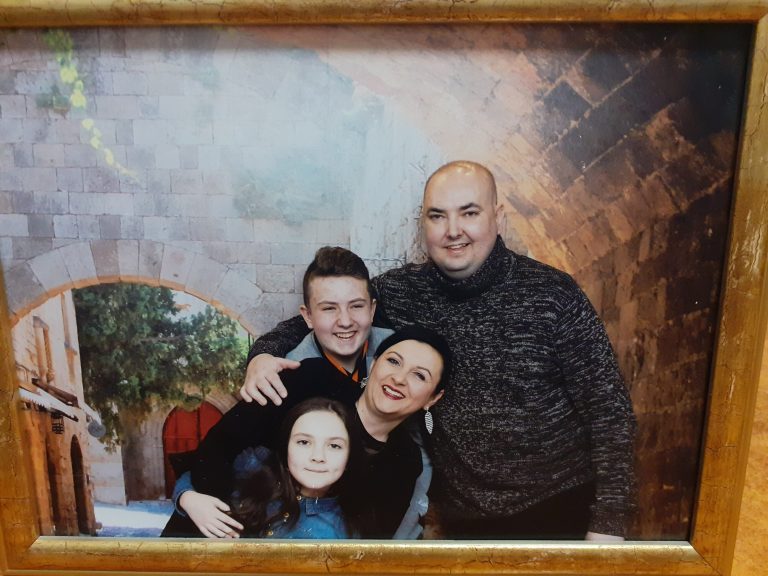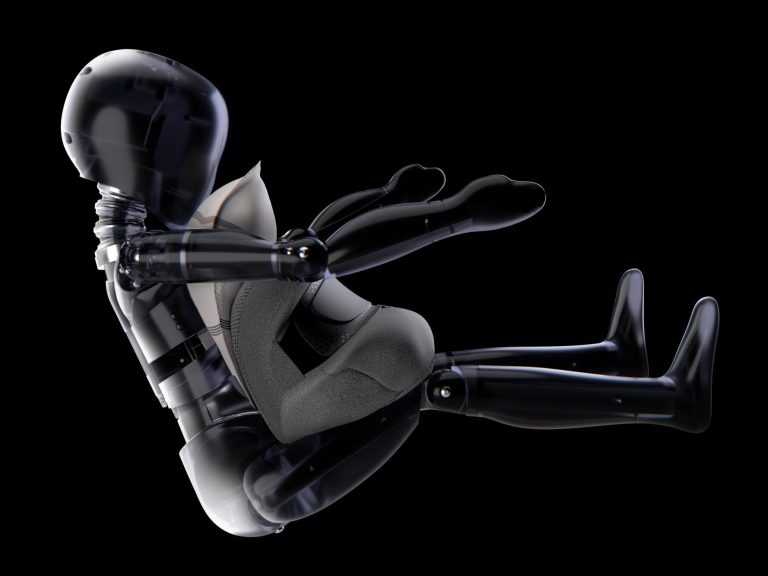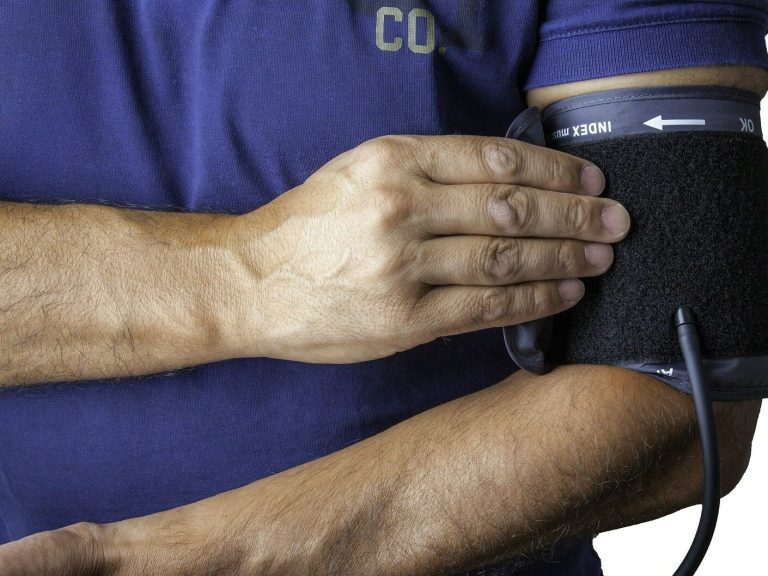“Watch out – this is a seizure!” – an educational campaign about rare epilepsy syndromes is launched

A diagnostic odyssey, consultations with dozens of doctors, daily fear for health and life, difficult access to many specialists, including psychologists – this is the everyday life of patients with rare, drug-resistant epilepsy syndromes – Dravet syndrome or Lennox-Gastaut syndrome.
The situation of patients and their loved ones is further exacerbated by the lack of understanding and acceptance, both from society and institutions. “These people simply deserve for their voices to finally be heard,” argue the authors of the educational campaign “Attention – this is a robbery!” from the Dravet.pl Association.
The conference inaugurating the campaign, organized at the PAP Press Center on the occasion of the International Dravet Syndrome Awareness Day, which we will celebrate on June 23, was not by accident attended by representatives of the most important scientific societies in the field of neurology. The initiative has gained a wide range of patrons, led by the National Consultant in the field of pediatric neurology, the Polish Society of Pediatric Neurologists, the Polish Neurological Society and the Dravet Syndrome European Federation. This is a reason for satisfaction, especially since twenty years ago – as recalled by parents of patients with rare epilepsy syndromes participating in the conference – this topic was practically absent from the public sphere, and also unfamiliar to many doctors.
“When we founded our association 11 years ago, there was not a single Polish-language website dedicated to the symptoms and course of Dravet syndrome. Today, this is changing, also thanks to campaigns of this type, but for the family and loved ones of each newly diagnosed patient, it is still a shock and news that brings with it a huge amount of fear, suffering, and sacrifice,” said Norbert Jezierski, president of the Association for People with Severe Drug-Resistant Epilepsy Dravet.pl.
About 60 different epileptic syndromes have been described so far. Many of them, due to their frequency of occurrence, are classified as rare diseases. They most often appear in early childhood, and many of them are genetically determined and are closely related to disorders of brain development. Some of the most severe, rare epileptic syndromes include Dravet syndrome and Lennox-Gastaut syndrome.
Patients with these epileptic syndromes often experience multiple seizures each day, sometimes even hundreds of seizures per day. They are drug-resistant and often require the use of multiple different anti-seizure medications.
The idea of a campaign educating society about rare epilepsy syndromes was born in rather dramatic circumstances, as described by Jolanta Kuryło, vice-president of the Dravet.pl Association and the originator of the initiative “Attention – this is a seizure! Life with rare epilepsy syndromes”, and at the same time a mother of a 6-year-old son suffering from Dravet syndrome.
“Once, while standing at the checkout with my child, I was irritated by how much I had to explain my child’s serious illness. I noticed symptoms of an approaching epileptic seizure in my son, and since you never know how a given seizure will end, you have to do everything to stop it as soon as possible. So I asked for priority in the queue and was attacked for exaggerating and being hysterical. I thought then that we should make a film about Dravet syndrome and educate what life is like with rare epileptic syndromes. Through the campaign, we want to show everyone what a difficult and constant fight we have to lead,” explained Jolanta Kuryło.
In both Dravet syndrome and Lennox-Gastaut syndrome, early diagnosis plays an extremely important role, which allows for reducing the impact of factors increasing the risk of SUDEP (Sudden Unexpected Death in Epilepsy) and providing comprehensive care at the early stage of the disease.
“In both cases, time plays a key role: a correctly diagnosed disease allows for the introduction of appropriate treatment to the patient at the earliest possible stage of its development. Therefore, the creators of the campaign rightly emphasize that patients with rare epilepsy syndromes should not only have a chance, but also the right to modern, targeted diagnostics and access to effective drugs dedicated to each of them individually,” emphasized Prof. Maria Mazurkiewicz-Bełdzińska, chairwoman of the Polish Society of Pediatric Neurologists.
Dravet syndrome is a severe, progressive and rare form of early childhood developmental-epileptic encephalopathy, most often genetically determined – in about 80% of cases, a mutation in the SCN1A gene is responsible for the occurrence of this disease. It is characterized by a high frequency of drug-resistant seizures, which are accompanied by progressive psychomotor impairment of patients. It is also associated with a high risk of premature death as a result of status epilepticus and sudden, unexpected death in the course of epilepsy (SUDEP). In the course of Dravet syndrome, epileptic seizures most often begin before the age of 1 in a normally developing child and are highly drug-resistant, which in practice means a long and complicated process of selecting an effective combination of treatments.
Lennox-Gastaut syndrome, on the other hand, is characterized by the occurrence of many types of drug-resistant epileptic seizures, a specific EEG image recording, and significant delay in psychomotor development and intellectual disability. In about 70 percent of patients, the cause of the symptoms is structural changes in the brain, resulting from, for example, infections, developmental defects, or perinatal or prenatal trauma. In the remaining patients, in whom the occurrence of the disease cannot be explained by abnormalities in the brain, a genetic cause is possible, although medicine has not yet found a clear answer in this matter.
“I see great progress in treating patients and extending their lives, but there is still no shortage of challenges and systemic needs. Both syndromes are very complex conditions that require comprehensive care, not only neurological, but also physiotherapy, speech therapy, and rehabilitation. We must also focus on the moment when patients transition from the care of pediatricians to adult neurologists, so that these changes are not associated with unnecessary stress or formal complications,” assessed Prof. Konrad Rejdak, president of the Polish Neurological Society.
Experts also raised the issue of access to targeted therapies. Only a few drugs have been registered for the treatment of epileptic seizures associated with Dravet syndrome and Lennox-Gastaut syndrome. In April, one of them was reimbursed under the drug program. Currently, a second drug is in the process, also highly anticipated by patients and their loved ones. According to the entire community, patients suffering from rare drug-resistant epilepsy syndromes should have reimbursed access to all therapies dedicated to the treatment of selected syndromes.
“There is a need for systemic, quick solutions: contracting a new drug program, creating a special platform dedicated to rare diseases, new and more comprehensive financing for much-needed expert centers,” said Prof. Justyna Paprocka, national consultant in the field of pediatric neurology.
Another separate and problematic issue is the efficiency of the entire system of care for patients and their loved ones. An example of this is the obligation to regularly appear before committees and constantly prove the existence of this incurable disease in order to receive the appropriate disability certificate. Social care, medical tourism, access to specialists in various fields: in these areas there is still a lot to catch up on compared to other European countries.
“I know from personal experience that providing your sick child with a decent life is a constant clash with the system. The awareness of doctors, who are not able to be specialists in every rare disease, is still low, and it is often the parents who have to instruct them,” said Katarzyna Jezierska from the Association for People with Severe Drug-Resistant Epilepsy Dravet.pl.
She also drew attention to the deficit of institutional support for families affected by these syndromes:
“Kindergartens are reluctant to accept sick children, and there is a dramatic lack of community centres for sick adults that would give their carers a chance to get some respite,” explained Katarzyna Jezierska.
The picture emerging from conversations with parents or guardians of people suffering from Dravet and Lennox-Gastaut syndromes is shocking: the average waiting time for a proper diagnosis of the disease is almost three years, although some diagnostic odysseys lasted even a dozen. During this time, consultations with an average of 6 doctors took place, although sometimes as many as 50, also outside Poland. A chance to improve the situation would be to facilitate systemic access to modern and fast diagnostics, especially genetic ones.
“Caregivers also experience social exclusion, with as many as 80% of them reporting a ‘sense of hopelessness’. Watching over a patient 24 hours a day is an extremely stressful task, accompanied by the awareness that each epileptic seizure can end in the death of a loved one. In addition, caregivers struggle with lack of understanding and fear, including from those closest to them,” explained Dr. Jan Domaradzki, head of the Department of Health Sociology and Social Pathologies at the Poznań University of Medical Sciences.
The ambition of the authors of the campaign “Attention – this is a seizure! Life with rare epilepsy syndromes” is to change these statistics – to offer real, systemic, comprehensive support to both patients and their caregivers, who every day undertake a heroic, unequal fight against the disease. The addressees of this message are not only doctors and political decision-makers, but the entire society, on whose openness, sensitivity and empathy the quality of life of patients depends.
“Ignorance breeds fear and stereotypes, hence the idea for a campaign that will dispel many myths that have arisen around rare epilepsy syndromes. During the debate, we mentioned that kindergartens are afraid to accept sick children. However, it is worth adding that there are wonderful examples of how such integration brings great results, both for healthy children, learning openness and acceptance, and for sick children, for whom contact with peers is invaluable. A child is a child, no matter what,” emphasized Jolanta Kuryło.
At the end of the conference devoted to education, paramedic Przemysław Małecki recalled the basic principles of conduct for people witnessing an epileptic seizure.
“First of all, we immediately remove all dangerous objects located near the person experiencing an epileptic seizure. Secondly, we clear the airways and provide a supply of fresh air, e.g. by opening windows. We control circulatory and respiratory functions, and after the seizure has passed, we place the patient in a safe lateral position, waiting for the arrival of medical services,” Przemysław Małecki reminded.
The honorary patrons of the campaign are: National Consultant in the field of pediatric neurology, Polish Society of Pediatric Neurologists and Polish Neurological Society. The initiative was also patroned by: National Orphan Forum, Dravet Syndrome European Federation, EPI-Bohater Foundation, Polish Association for Children with Epilepsy. The campaign partner is UCB.
You can read more about this unique initiative on the campaign website: www.zespolypadaczkowe.pl.
Trailer for the film about Dravet Syndrome:
First aid training with a lifeguard:







